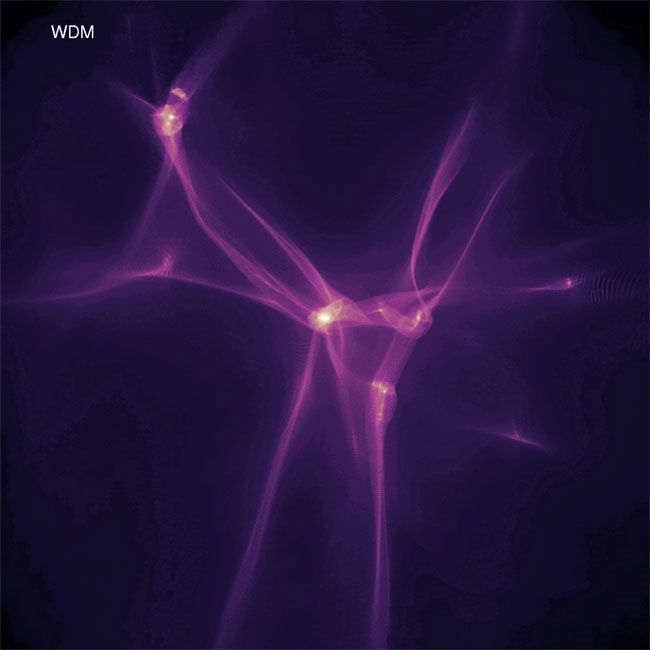Dark Matter Stars Could Solve Cosmic Mystery

In the early universe, the first stars may have been made not of regular matter, but of its mysterious cousin, dark matter. But exactly how it all happened remains a mystery, and figuring it out could help astronomers understand dark matter itself.
Dark matter is the pesky substance thought to permeate the universe that stubbornly refuses to show itself to telescopes or any other direct detection method scientists can throw at it. Yet researchers can sense it lurking by the gravitational pull dark matter exerts on normal stars and galaxies.
There are many competing theories about what dark matter is actually made of, and each suggestion comes with slightly different properties and implications. Now, a new study calculated which possible forms of dark matter could lead to so-called dark stars.
Not really dark
"Not all kinds of dark matter would be able to form dark stars," said study leader Paolo Gondolo of the University of Utah. "In this sense dark stars are a tool to understand the nature of dark matter." [Video: Dark Matter in 3-D]
The term dark star is somewhat misleading, he said, because in fact these stars would emit light and would be visible. But the matter that reacts in the star's core to form that light would be dark matter, not regular matter.
Though dark stars have not yet been observed by telescopes, some experts think future observatories like the James Webb Space Telescope, a successor to the Hubble Space Telescope, set to launch in 2014, could be up to the job.
Sign up for the Live Science daily newsletter now
Get the world’s most fascinating discoveries delivered straight to your inbox.
"If we detect evidence of dark stars, or if we can say that there are no dark stars, then they present constraints" on what dark matter is made of, Gondolo told SPACE.com.
What makes a star?
Many dark matter candidate particles are their own antimatter partner, which means if two particles come close enough together, they will annihilate to produce energy, some of which is emitted in the form of light.
Today, with the universe spread out, matter is not packed tightly enough for dark matter particles to be condensed to the point of annihilating. But after the Big Bang when the universe was young and comparatively small, the conditions were right for dark stars.
Dark matter would only form a very small fraction of the total mass of such stars – the rest would be normal matter. But the dark matter annihilation process is very efficient, because colliding dark particles would convert all of their mass to energy via Einstein's equation, E=mc2.
Thus dark stars would shine quite bright.
Eventually, when the dark matter supply inside the star was exhausted, normal matter would condense to begin the regular process of nuclear fusion that fuels most stars. Some of these could still be around today.
A few good candidates
One popular candidate for the stuff that makes up dark matter is an elementary particle called the axion. These hypothetical particles are predicted by theory, but have never been detected.
They would have no electric charge, a small mass, and would be very resistant to interact with ordinary matter – a key qualification that makes some scientists suspect they are the culprit behind dark matter.
"We find that axions are not good to form dark stars," Gondolo said. Their particular characteristics are not suitable for reacting in the way it would take to power stars. That means that if dark stars are ever observed, axions may be out as a candidate.
Another possibility is a hypothetical category of particles called WIMPs (weakly interacting massive particles). These would be quite heavy – which could help explain why dark matter accounts for about 98 percent of all the matter in the universe, scientists think.
The weakly interacting part denotes their standoffish nature – they would rarely react with other particles – again, another requirement if they are the stuff of dark matter.
Some WIMPS, it turns out, would be good at forming dark stars. One type, a particle called the neutralino, is predicted by the supersymmetric theory, which posits that every particle has a symmetric partner particle that we haven't yet discovered.
One kind of neutralino, the photino (the partner of the photon) would be the lightest – and therefore the easiest to detect – of these partners.
"Neutralinos can produce dark stars, with very few exceptions," Gondolo said.
The findings were published in a recent issue of the Journal of Cosmology and Astroparticle Physics.
Most Popular


